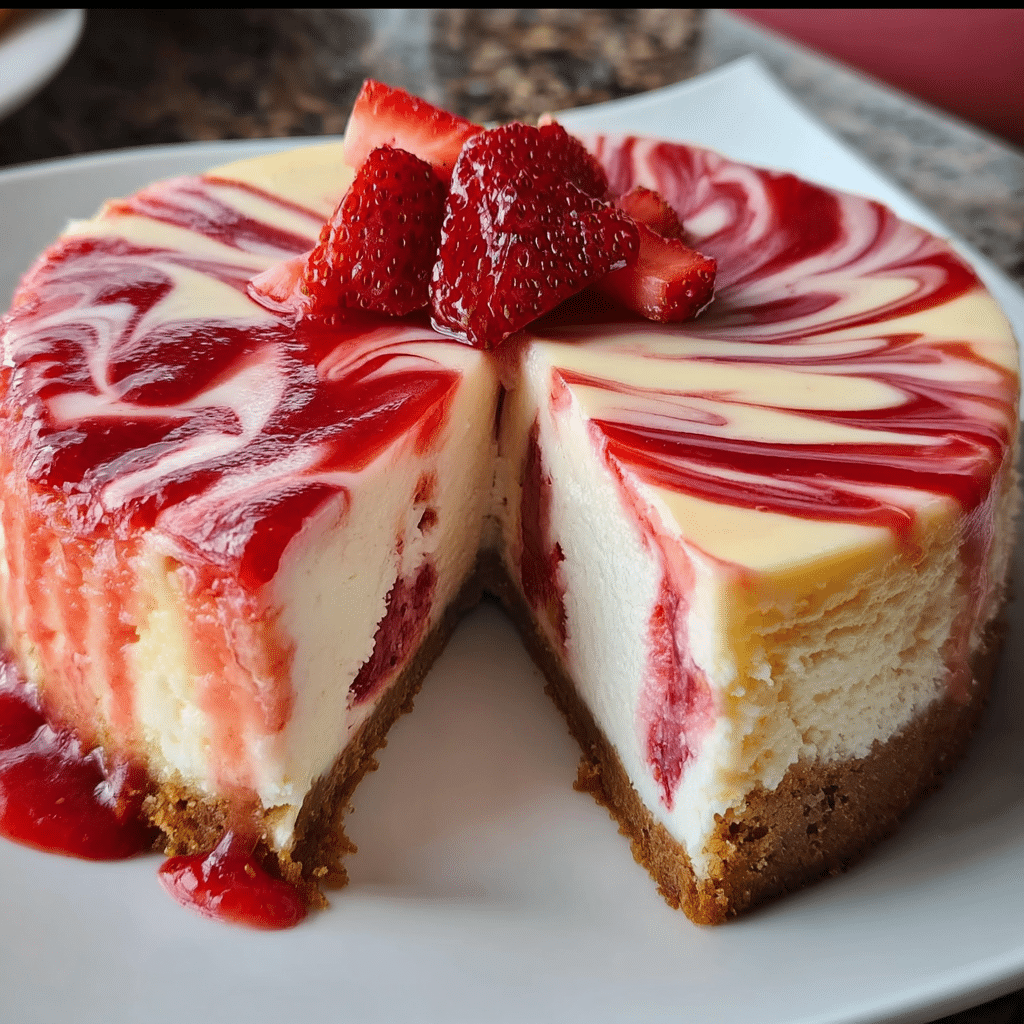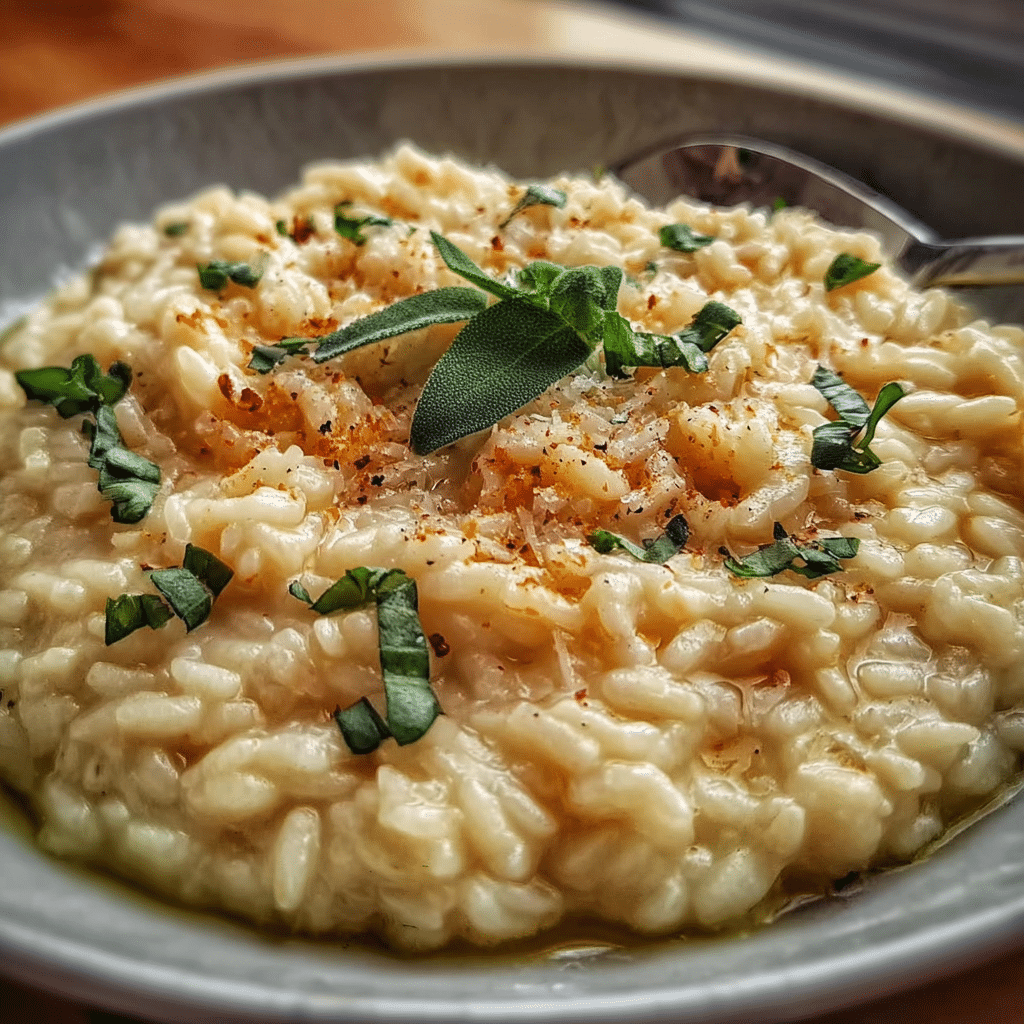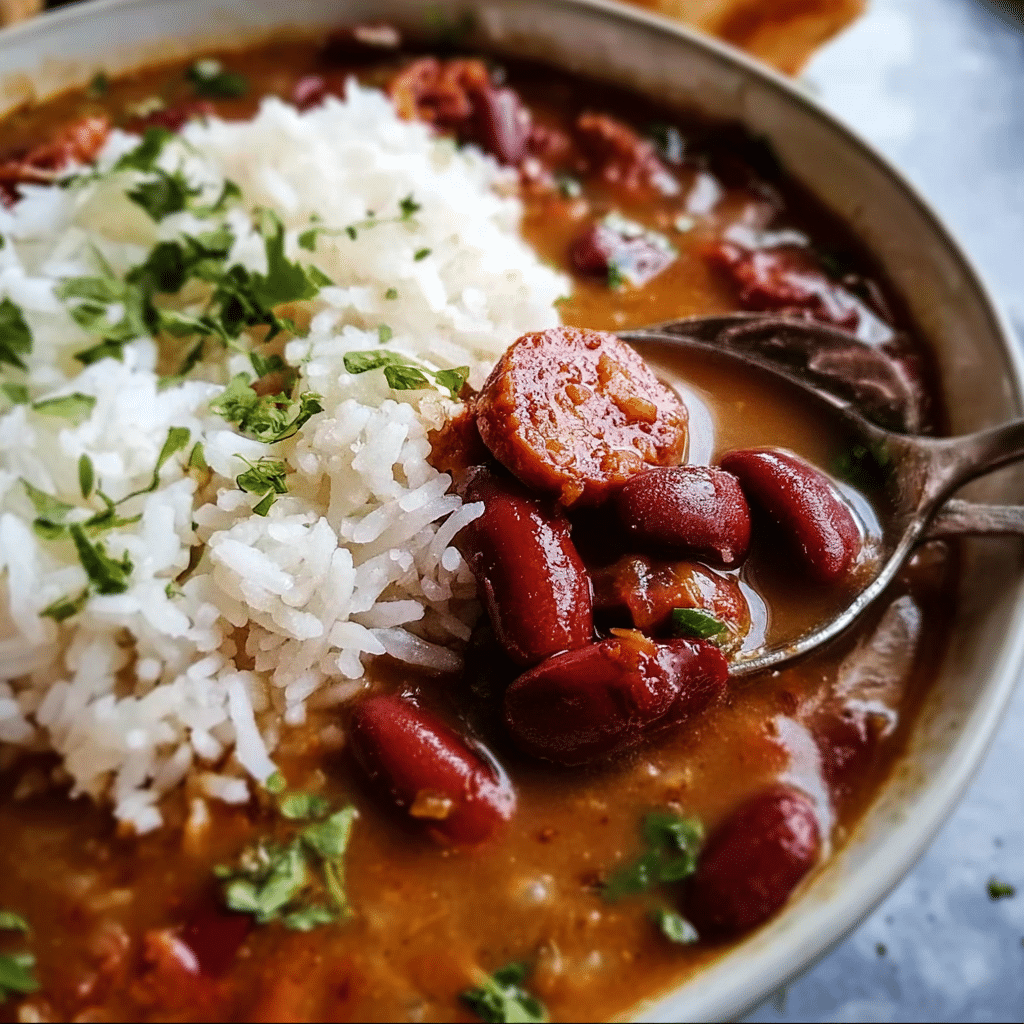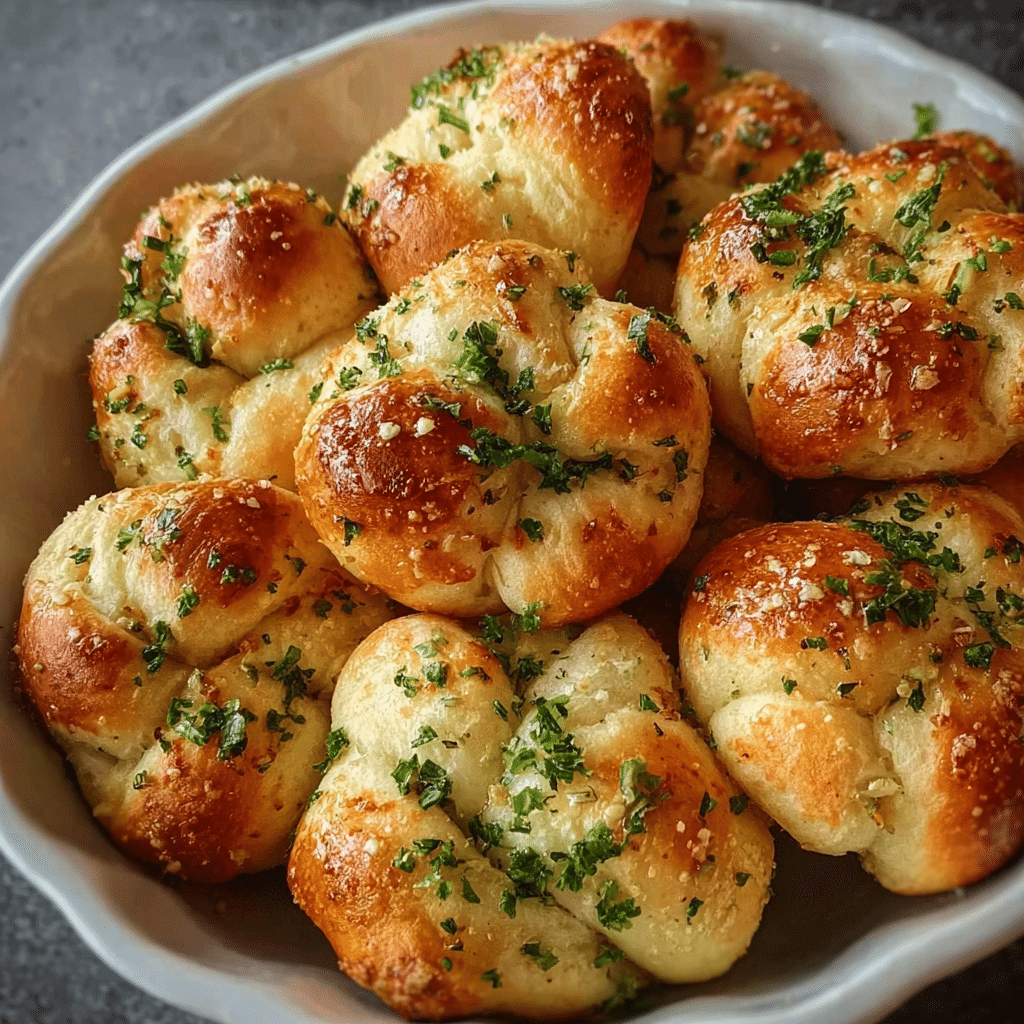Turtle pumpkin cheesecake is a dessert that seamlessly blends the warm spices of fall with the rich, decadent flavors of chocolate and caramel. My journey with this delightful dish began on a crisp October afternoon, when I stumbled upon a charming little bakery while exploring a farmer’s market. The air was filled with the sweet aroma of baked goods, and as I browsed the tables adorned with pumpkins and gourds, I spotted a sign that read “Turtle Pumpkin Cheesecake.” Intrigued, I couldn’t resist purchasing a slice. One bite was all it took for me to become captivated by the harmonious combination of creamy pumpkin, velvety chocolate, and the crunch of pecans. I knew right then that I had to recreate this masterpiece in my own kitchen.
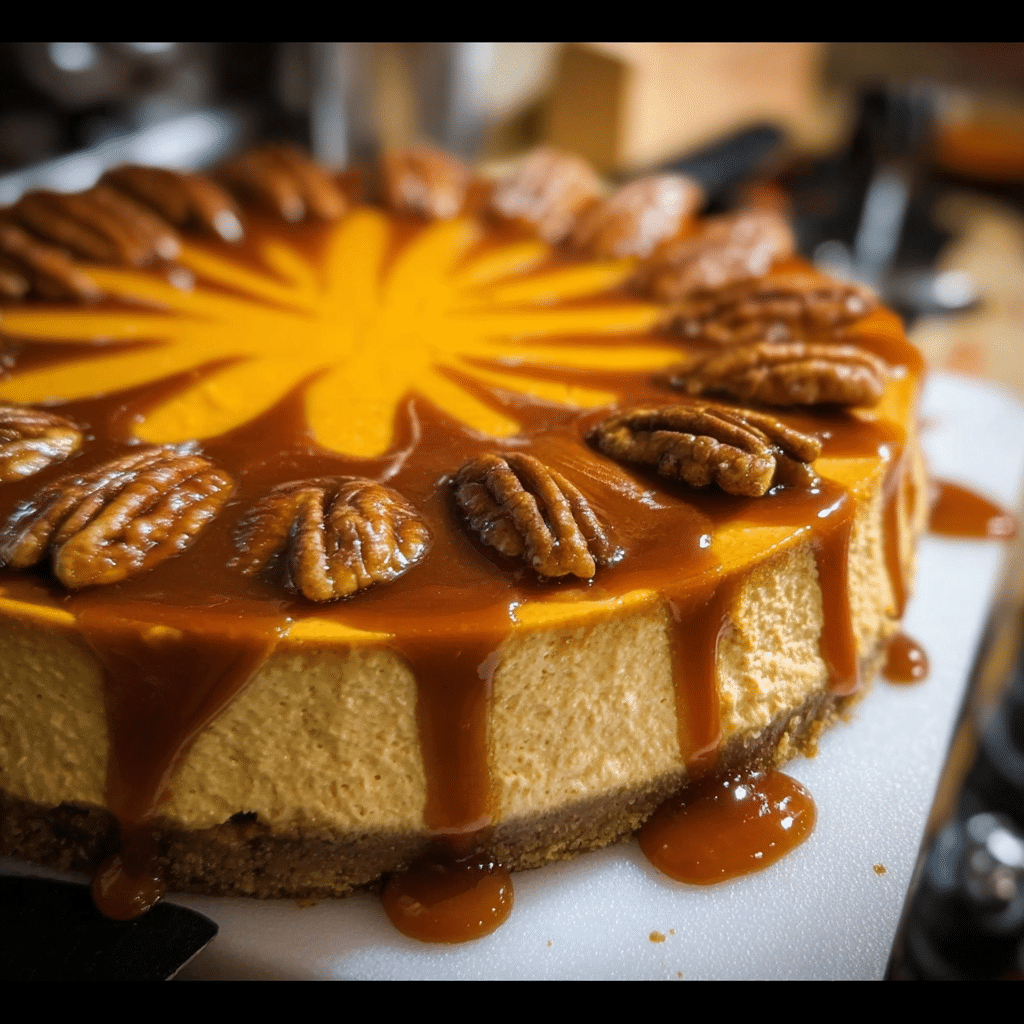
As I began to experiment and develop my own turtle pumpkin cheesecake recipe, I discovered that this dish is more than just a dessert; it embodies the spirit of family gatherings, holiday celebrations, and cozy evenings spent at home. In my experience, food has an incredible ability to evoke memories and emotions, and this cheesecake became a symbol of togetherness for my family. Each time I whip up this dessert, it brings back memories of laughter and warmth, making it a staple during our autumn celebrations.
The Story Behind This Recipe
The origins of turtle pumpkin cheesecake can be traced back to the iconic turtle dessert, which is traditionally made with chocolate, caramel, and pecans, mimicking the shell of a turtle. The addition of pumpkin is a nod to the fall season, where pumpkins take center stage in many households. This fusion of flavors reflects a growing trend in culinary creativity, where classic recipes are reimagined to create something new and exciting.
One of the reasons this recipe is special is its versatility. Turtle pumpkin cheesecake is perfect for busy families looking for quick dinner solutions. It can be prepared ahead of time and stored in the refrigerator, making it an ideal dessert for potlucks or family gatherings. Not to mention, it’s a fantastic way to use up any leftover pumpkin puree from Halloween! The flavors meld beautifully over time, making it an even more delightful treat when served a day or two after it’s made.
Seasonally, turtle pumpkin cheesecake shines brightest in the fall. As the leaves change colors and the air turns crisp, this dessert captures the essence of the season. It can be served during Thanksgiving dinner, Halloween parties, or simply as a sweet indulgence on a chilly evening. The comforting flavors of cinnamon, nutmeg, and clove paired with the richness of chocolate create an emotional connection that ties the dessert to cherished moments spent with loved ones.
In this article, you will learn not only how to make your very own turtle pumpkin cheesecake but also gain insights into the cultural history behind this delicious dish. I will share tips and tricks that will ensure your cheesecake turns out perfectly every time, along with variations you might want to try. You’ll also discover the reasons why this dessert deserves a place on your table this season, whether for a special occasion or just a cozy night in.
Why You’ll Love This Dish
In addition to its rich flavor and comforting texture, turtle pumpkin cheesecake is a crowd-pleaser. Friends and family will rave about the luscious layers of pumpkin-infused cream cheese, chocolate ganache, and crunchy pecans. The combination of sweet and savory flavors makes it stand out from traditional pumpkin pies, and its stunning presentation is sure to impress your guests.
As you dive into the world of turtle pumpkin cheesecake, you’ll find that it’s more than just a recipe; it’s an experience, a way to bond with your loved ones through shared moments in the kitchen. So roll up your sleeves, put on your apron, and let’s embark on this delightful culinary journey together. By the end of this guide, you’ll have all the tools you need to create a turtle pumpkin cheesecake that will become a cherished tradition in your home.
The Rich History and Cultural Significance of turtle pumpkin cheesecake
The rich history and cultural significance of turtle pumpkin cheesecake is a fascinating tale that intertwines various culinary traditions and seasonal celebrations. This delectable dessert combines elements of American baking with the deep-rooted traditions of pumpkin dishes that have been enjoyed for centuries. To fully appreciate the turtle pumpkin cheesecake, we must first explore its origins and how it has evolved over time.
Origins and History
The origins of pumpkin desserts can be traced back to Native American tribes who utilized pumpkins and other squashes as staple foods. They would roast pumpkin and incorporate it into various dishes, including pies, long before European settlers arrived. The modern-day pumpkin pie that we know today began to take shape in the 17th century with the arrival of English settlers, who adapted their own pie-making techniques to incorporate local ingredients like pumpkin.
On the other hand, the concept of the “turtle” dessert, which combines chocolate, caramel, and nuts, gained popularity in the early 20th century. The name “turtle” is believed to have originated from the chocolate-covered caramel candies that resemble the shell of a turtle. The combination of these two culinary traditions created a unique opportunity for innovation, leading to the emergence of turtle pumpkin cheesecake as we know it today.
Over the years, this delightful dessert has seen various iterations and adaptations, from traditional baked cheesecakes to no-bake versions that make the dish quicker and easier to prepare. Each variation offers a unique twist while maintaining the core flavors that make turtle pumpkin cheesecake so beloved.
Cultural Significance
Turtle pumpkin cheesecake holds a special place in American culture, particularly during the fall season. It is often served at family gatherings and holiday celebrations such as Thanksgiving, where pumpkin-flavored desserts reign supreme. The melding of flavors in this cheesecake reflects the comfort and warmth associated with the autumn season, bringing families together to celebrate the harvest and create lasting memories.
Additionally, this dessert has become a staple in many bakeries and restaurants across the United States. Chefs and home bakers alike have embraced the creativity that turtle pumpkin cheesecake allows. Some famous chefs have put their own spin on it, introducing elements like spiced whipped cream or a ginger snap crust, further elevating the dish’s profile.
Nutritional Benefits
While turtle pumpkin cheesecake is undoubtedly a treat, it also offers some nutritional benefits, especially when made with fresh pumpkin puree. Pumpkin is packed with vitamins A and C, making it a healthy addition to your dessert. It is also high in fiber, which can aid digestion. The nuts in the turtle topping, typically pecans, are a great source of healthy fats and protein, adding nutritional value to each slice.
However, like any dessert, moderation is key. While it’s tempting to indulge in a generous slice of turtle pumpkin cheesecake, being mindful of portion sizes can help you enjoy the treat without overdoing it. You can also explore healthier alternatives for certain ingredients, such as using low-fat cream cheese or reducing the sugar content without sacrificing flavor.
In conclusion, turtle pumpkin cheesecake is a delicious dish steeped in history and cultural significance. Its unique combination of flavors and textures make it a standout dessert for any occasion, while its roots in American culinary traditions remind us of the importance of family, celebration, and togetherness. As we delve deeper into the world of turtle pumpkin cheesecake, we will uncover the secrets to creating this beloved dessert in your own kitchen.
Essential Ingredients for Perfect turtle pumpkin cheesecake
When it comes to creating a show-stopping dessert that captures the essence of autumn, turtle pumpkin cheesecake is truly in a league of its own. Rich, creamy, and with the delightful crunch of pecans and the sweetness of caramel, this dessert is perfect for any gathering, especially around the holidays. But before we dive into the delightful world of baking this cheesecake, let’s explore the essential ingredients that come together to create this masterpiece.
Essential Ingredients
- Crust:
- 1 ½ cups graham cracker crumbs
- ½ cup unsalted butter, melted
- ¼ cup granulated sugar
- Filling:
- 24 oz cream cheese, softened
- 1 cup pumpkin puree (canned or fresh)
- 1 cup granulated sugar
- 3 large eggs
- 1 tsp vanilla extract
- 1 tsp ground cinnamon
- ½ tsp ground nutmeg
- ½ tsp ground ginger
- ¼ tsp salt
- Topping:
- 1 cup pecans, chopped
- 1 cup caramel sauce
- Whipped cream (optional)
Now, let’s break down the importance of each ingredient. The graham cracker crumbs form the base of our crust, providing a sweet and slightly crunchy layer that complements the smooth filling. When selecting graham crackers, look for those made with whole grains for a richer flavor and texture.
The unsalted butter is crucial for binding the crumbs together. Always opt for unsalted butter to have better control over the seasoning of your cheesecake. The granulated sugar adds sweetness to the crust, balancing the flavors of the creamy filling.
Moving on to the filling, cream cheese is the star of the show. It provides that rich, creamy texture we all adore in a cheesecake. Make sure to bring it to room temperature before mixing to ensure a smooth batter. When selecting cream cheese, look for quality brands that have a higher fat content for the best flavor and texture.
Pumpkin puree adds a lovely fall flavor and a beautiful orange hue to the cheesecake. You can use canned pumpkin puree for convenience, but if you want to make it from scratch, roast fresh pumpkins until tender, scoop out the flesh, and blend until smooth.
Granulated sugar not only sweetens the filling but also helps to stabilize the mixture. Meanwhile, the eggs act as a binding agent, giving structure to the cheesecake. Using large eggs is standard for baking, and make sure they’re at room temperature for better incorporation.
Vanilla extract enhances the overall flavor profile, while spices like cinnamon, nutmeg, and ginger bring warmth and depth to the dish. These spices are often associated with fall, evoking memories of cozy gatherings by the fireplace.
Lastly, the topping of caramel sauce and chopped pecans is what truly makes the turtle pumpkin cheesecake shine. The pecans add crunch and nutty flavor, while caramel introduces a rich sweetness. For the best experience, consider using homemade caramel for a fresher taste.
Print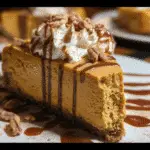
Turtle Pumpkin Cheesecake
Ingredients
For the crust:
- 12 ounces gingersnaps
- 6 tablespoon butter melted
For the cheesecake:
- 32 ounces cream cheese at room temperature
- ¾ cup granulated sugar
- ¼ cup brown sugar
- 1 15 ounce can pumpkin
- 4 eggs at room temperature
- 2 ½ tablespoon heavy cream at room temperature
- 1 tablespoon pure vanilla extract
- 2 teaspoon cinnamon
- ½ teaspoon ground ginger
- ½ teaspoon salt
- ½ teaspoon ground nutmeg
- ¼ teaspoon ground cloves
- ¼ teaspoon ground allspice
For the topping:
- ½ cup whole pecans
- ½ cup chopped pecans
- 1 cup semi-sweet chocolate chips
- caramel sauce
Instructions
- Preheat oven to 350 degrees F. Wrap a 9-inch springform pan with heavy duty foil around the edges.
To make the crust:
- Pulse gingersnaps and pecans in large food processor or put them in a large plastic baggie and roll them with a rolling pin until fine crumbs.
- Add melted butter and pulse more until combined. Press into prepared springform pan and bake in preheated oven for 10 minutes. Remove from oven.
Set aside and reduce oven temperature to 325 degrees F.
To make the cheesecake:
- In large bowl with electric mixer, beat cream cheese, sugar, and brown sugar until smooth and creamy, about 3 minutes.
- Add the pumpkin and mix on low. Scrape down sides as needed.
- Add the eggs, one at a time, scraping down the sides as needed.
- Add heavy cream and vanilla and beat until combined, about 1 minute.
- Finally, add the spices and salt and mix well to combine.
- Pour batter into prepared crust.
- Place the springform pan in a large roasting pan in which the springform pan will fit and add hot water to pan about halfway up the springform pan. Note: I like to place it in the oven before adding the water so I don’t have to worry about spilling the water.
- Bake the cheesecake in preheated oven for 65-70 minutes, until the edges are set and the middle still jiggles a little.
- Keeping the oven door closed, turn off the oven and let the cheesecake cool in oven for 1 hour.
- After an hour, remove from the oven.
- Take the springform pan out of waterbath and let cool on a wire rack for 2 hours. Note: it might still look a little jiggly at this point – that’s okay! It will firm up completely in the refrigerator.
- Lastly, place in refrigerator and let cool completely for at least 6 hours, preferably overnight.
- Once cooled completely, sprinkle pecans on top of cheesecake in your preferred design.
- Place semi-sweet chocolate chips in a bowl and microwave in 30 second increments until melted.
- Drizzle chocolate over pecans.
- Warm caramel sauce in microwave for about 30 seconds.
- Finally, drizzle with caramel sauce to your liking.
- Serve and enjoy!
Shopping Tips
When heading to the store, it’s helpful to make a list of all the ingredients you’ll need. Consider shopping at local farmers’ markets for fresh pumpkins and high-quality eggs. For spices, look for those marked as ‘fresh’ in the spice aisle, as they tend to have a more potent flavor. If you’re looking for organic options, many grocery stores now carry organic versions of cream cheese, butter, and sugar.
Remember, seasonal ingredients often taste better and can be more affordable. Pumpkin is widely available in the fall, and if you can, try to buy it fresh. For the pecans, check the bulk section of your store; it often offers better prices and allows you to buy just what you need.
Substitutions and Alternatives
For those with dietary restrictions, there are plenty of substitutions available. For a gluten-free version of your turtle pumpkin cheesecake, use gluten-free graham crackers or even almond flour for the crust. If you’re looking to lower the calories, consider using reduced-fat cream cheese, but be aware that it may affect the creaminess of the cheesecake.
If you need a dairy-free option, you can substitute cream cheese with a vegan cream cheese alternative, and use coconut cream instead of whipped cream. For the eggs, a flaxseed meal mixed with water can serve as an egg substitute in many recipes.
Finally, storage is key. Keep any leftover ingredients in airtight containers. Cream cheese, for example, should be refrigerated and can usually last up to two weeks past its expiration date if stored properly. However, for the best flavor and texture, use all ingredients fresh and as close to the baking day as possible.
Now that we’ve covered the essential ingredients for your turtle pumpkin cheesecake, it’s time to gather them and get ready for the delightful process of baking this delicious dessert!
Detailed Step-by-Step turtle pumpkin cheesecake Cooking Instructions
Creating a turtle pumpkin cheesecake at home is not just a cooking task; it’s an experience that fills your kitchen with warmth and the delightful aroma of spices. With each step, you’ll not only be making a beautiful dessert but also creating memories that will last long after the last slice is gone. Let’s break down this journey into detailed steps, ensuring you have all the guidance you need to nail this recipe.
Preparation Steps
Before you even think about mixing ingredients, it’s essential to prepare your workspace efficiently. This is called mise en place, which translates to “everything in its place.” Start by gathering all your ingredients and tools. You’ll need a 9-inch springform pan, mixing bowls, measuring cups, a whisk, and a spatula.
- Preheat the Oven: Preheat your oven to 325°F (163°C). This temperature is ideal for baking your cheesecake slowly and evenly, which helps prevent cracks.
- Prepare the Springform Pan: Lightly grease the sides of your springform pan with butter or non-stick cooking spray to ensure easy removal later on. You can also line the bottom with parchment paper for added security.
- Make the Crust: In a mixing bowl, combine the graham cracker crumbs, melted butter, and sugar. Mix until the texture resembles wet sand. Press this mixture firmly into the bottom of the springform pan, ensuring an even layer. Use the back of a measuring cup for a compact crust.
- Chill the Crust: Place the crust in the refrigerator while you prepare the filling. This helps it set up a bit and makes it easier to work with later.
Cooking Process
- Prepare the Filling: In a large mixing bowl, beat the softened cream cheese with an electric mixer on medium speed until smooth and creamy. This usually takes about 2-3 minutes. Make sure there are no lumps, as they will affect the final texture of your cheesecake.
- Add the Pumpkin: Next, add the pumpkin puree and mix until fully incorporated. You’ll notice a beautiful orange color starting to form, signaling the pumpkin’s presence.
- Incorporate the Sugar: Gradually add the granulated sugar, continuing to mix on medium speed. This will help dissolve the sugar into the creamy mixture, ensuring a smooth consistency.
- Add the Eggs: Add the eggs one at a time, mixing on low speed after each addition. This prevents the mixture from becoming too airy, which can lead to cracks during baking. You want a dense and rich filling.
- Season the Filling: Add in the vanilla extract, ground cinnamon, nutmeg, ginger, and salt. Mix until just combined. The spices will infuse your filling with an aromatic warmth that perfectly complements the pumpkin flavor.
At this point, your filling should be smooth and creamy, with a beautiful balance of flavors. To ensure your cheesecake has the best texture, avoid overmixing.
Final Assembly
- Pour the Filling: Carefully pour the pumpkin filling over the chilled crust in the springform pan. Use a spatula to spread it evenly, ensuring there are no air bubbles trapped.
- Bake the Cheesecake: Place the springform pan in the preheated oven. Bake for about 60-70 minutes. You’ll know it’s done when the edges are set, but the center still has a slight jiggle. This jiggle is crucial, as the cheesecake will continue to set while cooling.
- Cool Gradually: Once out of the oven, let the cheesecake cool in the pan for about an hour at room temperature. This gradual cooling helps prevent cracks.
- Refrigerate: After it has cooled, cover the cheesecake with plastic wrap and refrigerate for at least 4 hours, or overnight if possible. Chilling allows the flavors to meld together beautifully.
- Prepare the Topping: When you’re ready to serve, drizzle the cheesecake with caramel sauce and sprinkle with chopped pecans. You can also add whipped cream for an extra touch of indulgence.
- Serve and Enjoy: Carefully remove the cheesecake from the springform pan. Slice and serve it chilled, savoring the rich, creamy texture and the delightful combination of pumpkin and caramel flavors.
Throughout this process, keep an eye on the cheesecake as it bakes. If you notice the top starting to brown too much, you can loosely cover it with aluminum foil. And remember, patience is key! The longer you let it chill, the better the flavor will be.
With these detailed steps, you’re now fully equipped to create your own turtle pumpkin cheesecake. Not only will it be a feast for the eyes, but it will also tantalize your taste buds and leave a lasting impression on everyone who gets to indulge in it.
Professional Tips and Techniques for turtle pumpkin cheesecake
Creating a turtle pumpkin cheesecake is a delightful culinary adventure, combining the rich flavors of chocolate, caramel, and pumpkin into a single decadent dessert. However, mastering this dessert requires some professional tips and techniques to ensure that it turns out perfectly every time. In this section, we will explore various aspects that contribute to a successful turtle pumpkin cheesecake, including insider secrets, troubleshooting tips, advanced techniques, essential kitchen equipment, and presentation strategies.
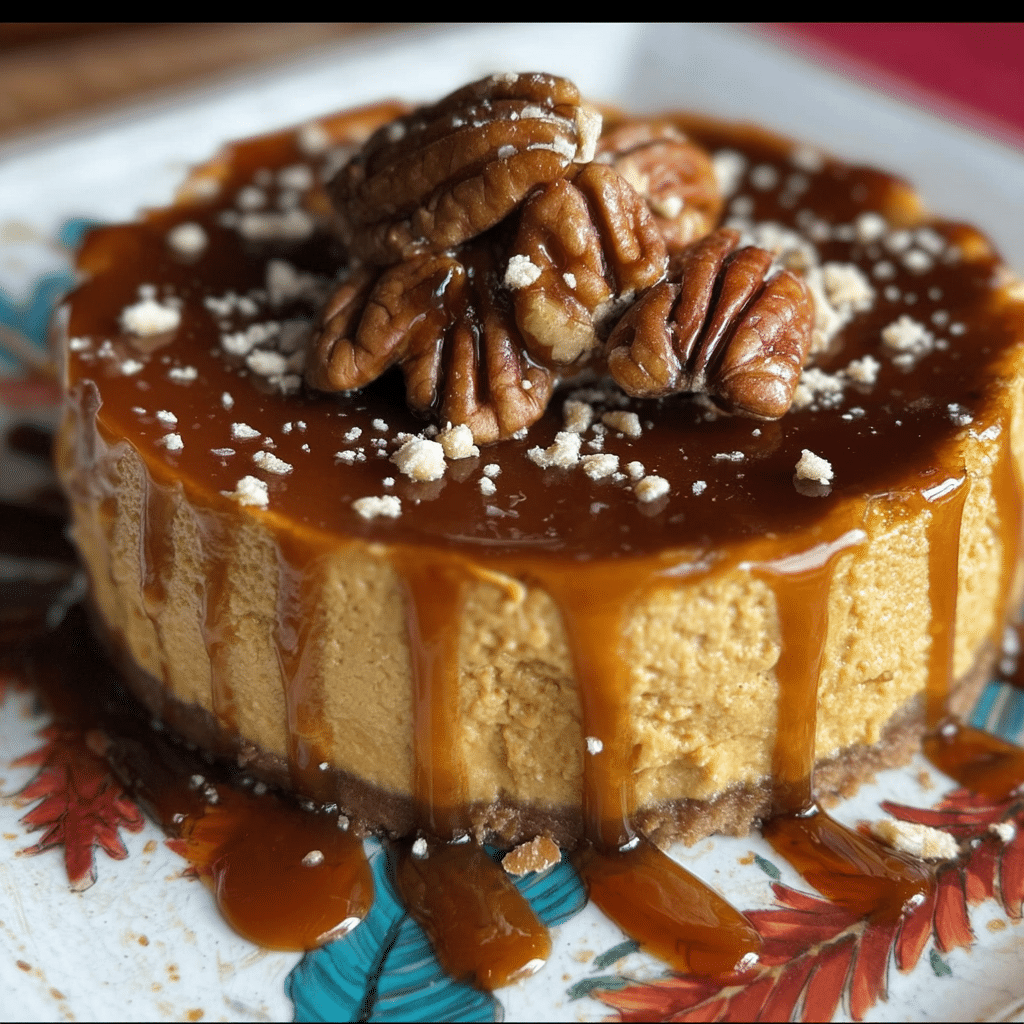
Professional Techniques
One of the key professional techniques for achieving a perfect turtle pumpkin cheesecake lies in the preparation of the crust. Typically made from crushed graham crackers or chocolate cookies, the crust should be tightly packed into the bottom of your springform pan. To achieve this, use the flat bottom of a measuring cup or a glass to press the crumbs down evenly. A slightly thicker crust can provide a sturdier base for the creamy filling.
When it comes to the cheesecake filling, one of the most important tips is to ensure that all ingredients are at room temperature before mixing. This not only helps in achieving a smoother texture but also allows for better incorporation of air into the batter, resulting in a lighter cheesecake. Mixing your cream cheese with sugar until smooth before adding other ingredients is crucial. Avoid overmixing once the eggs are added to prevent cracks in the surface of your cheesecake after baking.
Another insider secret is baking your turtle pumpkin cheesecake in a water bath. This technique involves wrapping the outside of your springform pan in aluminum foil to prevent water from seeping in, then placing the pan in a larger baking dish filled with hot water. This method helps to maintain a consistent temperature while baking, reducing the risk of cracks and ensuring even cooking.
Troubleshooting Guide
Even the most experienced bakers encounter problems from time to time, and a turtle pumpkin cheesecake is no exception. One common issue is cracking on the surface of the cheesecake. If this happens, it can often be attributed to overmixing or baking at too high a temperature. To avoid this, make sure to mix just until combined and bake at a low temperature. If cracks do appear, don’t fret! They can be easily covered with a delicious layer of ganache or whipped cream.
Another common problem is a cheesecake that doesn’t set properly. This can occur if the filling is not baked long enough or if the oven temperature is too low. Make sure to check for doneness by gently shaking the pan; the center should be slightly jiggly but not liquid. Cooling the cheesecake gradually in the oven with the door ajar can also help prevent the sudden temperature change that can cause sinking or cracking.
Presentation Tips
Presentation is key when it comes to serving your turtle pumpkin cheesecake. After all, we eat with our eyes first! One of the simplest yet most effective ways to elevate the look of your cheesecake is by drizzling it with homemade chocolate and caramel sauces. Use a squeeze bottle for precision, creating eye-catching patterns on each slice. A sprinkle of chopped pecans or walnuts on top can add a delightful crunch and enhance the visual appeal.
When plating, consider serving individual slices with a dollop of freshly whipped cream and a sprinkle of cinnamon for an added touch of elegance. A side of spiced apple compote can also complement the flavors beautifully while adding a pop of color to the plate. Use fresh mint leaves for garnish to create a vibrant contrast and a refreshing aroma.
Make-Ahead and Meal Prep Strategies
One of the best aspects of a turtle pumpkin cheesecake is that it can be made ahead of time, making it a perfect dessert for gatherings or holiday celebrations. In fact, allowing the cheesecake to chill overnight in the refrigerator can enhance the flavors and improve the texture. Simply wrap it in plastic wrap once it has cooled to room temperature and refrigerate. It can even be frozen for up to three months, just make sure to wrap it tightly in plastic and foil to prevent freezer burn.
When scaling the recipe up or down, consider the size of your springform pan. A 9-inch pan typically serves 12-16 people, while a 6-inch pan is perfect for a smaller gathering. Adjust baking times accordingly, as smaller cheesecakes will require less time in the oven, while larger ones may take longer. Always keep an eye on the cheesecake and test for doneness to ensure it’s perfectly baked.
Wine and Beverage Pairings
Completing your dining experience with the right beverage can elevate your turtle pumpkin cheesecake to a whole new level. A sweet dessert wine, such as a late harvest Riesling or a Muscat, pairs wonderfully with the rich flavors of the cheesecake. For those who prefer cocktails, consider a pumpkin spice martini or a spiced rum punch, which can enhance the autumnal flavors of the dish. Coffee lovers may enjoy a freshly brewed cup of espresso or a spiced chai latte alongside their cheesecake, as the warmth and spice of the drink balance the creamy richness beautifully.
In conclusion, mastering the art of making a turtle pumpkin cheesecake requires attention to detail and a few professional techniques. By following these tips, from perfecting the crust to troubleshooting common issues, you can create a stunning dessert that is sure to impress family and friends. With a little patience and practice, your turtle pumpkin cheesecake will not only taste divine but also look like a work of art.
Creative Variations and Adaptations of turtle pumpkin cheesecake
As delightful as the classic turtle pumpkin cheesecake is, there are endless possibilities when it comes to creative variations and adaptations that can take this dessert to new heights. Each twist adds a unique flavor profile or caters to specific dietary needs, ensuring that everyone can enjoy a slice. In this section, we’ll explore seasonal ingredient swaps, international fusion variations, dietary modifications, and more, providing you with a plethora of options to customize your turtle pumpkin cheesecake.
Seasonal Variations
One of the best things about a turtle pumpkin cheesecake is its versatility. You can easily adapt the recipe to reflect the seasons by incorporating different flavors and ingredients. For instance, during the fall, you might want to add a hint of maple syrup to the filling for a richer sweetness that complements the pumpkin. Additionally, consider using freshly grated nutmeg and allspice for a more aromatic flavor profile that embodies the essence of autumn.
In the winter months, incorporating peppermint extract can create a festive twist, transforming your turtle pumpkin cheesecake into a holiday treat. Swirl in some crushed peppermint candies into the filling or garnish with crushed candy canes on top for a cheerful presentation. As spring approaches, consider lightening things up by using a lemon-infused cheesecake base, which can offer a refreshing contrast to the richness of the pumpkin.
Dietary Adaptations
In today’s world, accommodating various dietary restrictions is essential. Luckily, turtle pumpkin cheesecake can be easily modified to suit different needs. For those following a keto diet, swap out the sugar for a sugar substitute like erythritol or monk fruit sweetener. Use almond flour instead of graham crackers for the crust to keep it low-carb. Additionally, you can replace cream cheese with a dairy-free alternative made from nuts or coconut, ensuring that everyone can enjoy this delicious dessert.
If you’re cooking for vegans, consider making a tofu-based filling blended with pumpkin puree, maple syrup, and spices for a creamy texture that replicates traditional cheesecake. A crust made from dates and nuts can add sweetness and crunch while keeping it plant-based. Gluten-free guests will appreciate a crust made from gluten-free cookies or ground nuts, allowing them to indulge in this dessert without worry.
Creative Twists
To truly make your turtle pumpkin cheesecake stand out, consider incorporating international flavors or unique ingredients. For a Mexican twist, add a touch of cinnamon and cayenne pepper to the cheesecake filling for a spicy kick. You can also swirl in dulce de leche instead of caramel for a rich, creamy texture that complements the pumpkin beautifully.
Let’s not forget about the possibility of different cooking methods. While the traditional turtle pumpkin cheesecake is baked, you can also experiment with a no-bake version. Simply blend your filling ingredients and pour them over a pre-made crust, then let it set in the refrigerator. This method is not only easier but also yields a lighter, creamier texture perfect for warmer months.
Leftover transformations are another exciting opportunity for creativity. If you find yourself with leftover turtle pumpkin cheesecake, consider repurposing it into a delicious milkshake. Blend a slice with some milk and vanilla ice cream for a decadent treat that will impress anyone. Alternatively, crumble the cheesecake over a bowl of ice cream or yogurt for a quick and indulgent dessert.
In conclusion, the turtle pumpkin cheesecake is a wonderfully versatile dessert that can be adapted in countless ways. By experimenting with seasonal ingredients, dietary modifications, and creative twists, you can create a version that suits your tastes and those of your guests. Whether you’re preparing a classic cheesecake or a unique variation, the joy of baking and sharing this delightful dessert is sure to bring smiles to everyone’s faces.
Storage, Reheating, and Meal Prep for turtle pumpkin cheesecake
When it comes to indulging in a delicious turtle pumpkin cheesecake, one of the most important aspects to consider is how to store it properly. With its creamy texture and rich flavors, you want to ensure that this delightful dessert stays fresh and tasty for as long as possible. Whether you made it for a special occasion or just because you wanted a slice of autumn goodness, knowing how to store, reheat, and prep turtle pumpkin cheesecake can make all the difference in enjoying it to the fullest.
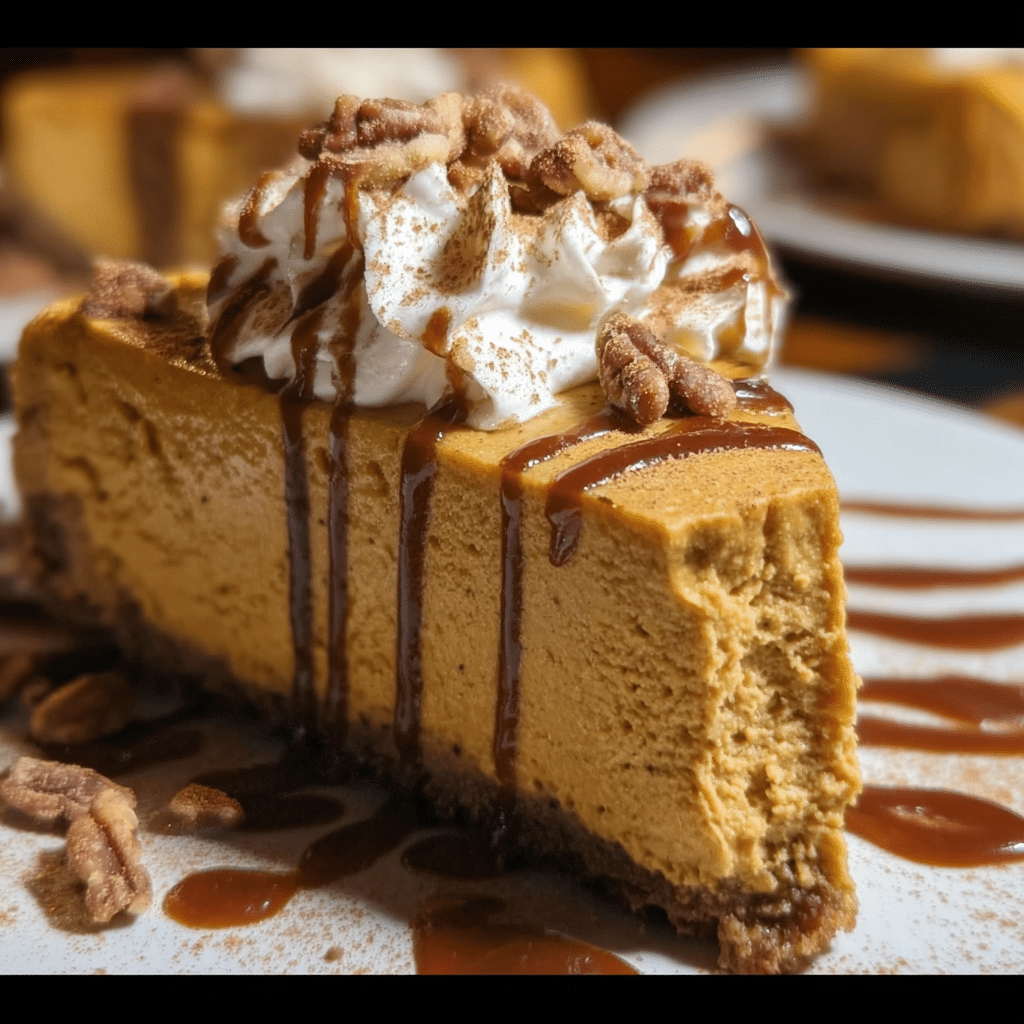
Short-term Storage
If you’ve just baked a turtle pumpkin cheesecake and are planning to enjoy it within a few days, the refrigerator is your best friend. First and foremost, allow your cheesecake to cool completely at room temperature before doing anything else. This cooling period is crucial, as placing a warm cheesecake in the fridge can lead to condensation and a soggy crust.
Once cooled, cover your turtle pumpkin cheesecake with plastic wrap or aluminum foil. If you have a cake carrier, that’s even better! Make sure it’s airtight to prevent any odors from other foods in your refrigerator from seeping into the cheesecake. Typically, a properly stored cheesecake can last in the fridge for about 5 to 7 days. However, I’d recommend checking for any signs of spoilage, such as an off smell or unusual texture, before indulging.
Freezing and Long-term Storage
Now, let’s say you’ve made a whole turtle pumpkin cheesecake but you’re only one person or it’s just too tempting to devour in one sitting. Freezing is an excellent option for long-term storage! To freeze your cheesecake, begin by slicing it into individual portions. This not only makes it easier to thaw later but also helps you control portion sizes when that sweet craving hits.
Wrap each slice tightly in plastic wrap, ensuring that no part of the cheesecake is exposed to air, which can lead to freezer burn. For added protection, place the wrapped slices in a freezer-safe container or a resealable freezer bag. When done correctly, turtle pumpkin cheesecake can last in the freezer for up to 2 to 3 months.
When you’re ready to enjoy a slice, transfer it to the refrigerator to thaw overnight. If you’re in a hurry, you can also use the microwave on a low setting to defrost your cheesecake, but be careful not to heat it too much, as this can change the texture.
Reheating Best Practices
While cheesecake is often best enjoyed chilled, there may come a time when you’d like to warm it up just a bit. If that’s the case, reheating your turtle pumpkin cheesecake requires a gentle touch. Preheat your oven to 350°F (175°C) and place your cheesecake on a baking sheet. Cover it loosely with aluminum foil to prevent it from browning too much. Heat for about 10 to 15 minutes, checking regularly to ensure it doesn’t get overly warm. The goal is to have it just slightly warmed through, enhancing the flavors without compromising the creamy texture.
Alternatively, if you prefer a quick fix, a few seconds in the microwave can work wonders. Heat it in 15-second intervals, checking the temperature to avoid overheating. Remember, a little warmth can accentuate the caramel and chocolate flavors of your turtle pumpkin cheesecake, making each bite even more delectable!
Meal Prep and Batch Cooking Strategies
If you’re a fan of meal prepping or hosting gatherings, consider making turtle pumpkin cheesecake in advance. This dessert is perfect for batch cooking, and it can be made a week or even two in advance, depending on your storage methods. Prepare the cheesecake according to your favorite recipe, then follow the cooling and storage instructions outlined above.
For gatherings, you can also prepare individual servings using mason jars or small containers. This not only looks charming but also makes serving easy and eliminates the need for slicing. Just layer the cheesecake with some crushed graham crackers and chocolate sauce, and you have a delightful treat ready to impress your guests!
Food Safety Considerations and Guidelines
As with any perishable food, food safety is paramount when storing turtle pumpkin cheesecake. Always ensure that your cheesecake is cooled completely before refrigerating or freezing. Pay attention to the “2-hour rule,” which states that perishable foods should not sit at room temperature for more than two hours. This is particularly important if you’re serving your cheesecake at a gathering.
When in doubt about the freshness of your cheesecake, trust your senses. If it smells off or has developed an unusual texture, it’s best to err on the side of caution and discard it. Proper storage not only helps maintain the quality of your turtle pumpkin cheesecake but also ensures that you enjoy it safely.
Portioning and Packaging Tips
When it comes to serving or storing turtle pumpkin cheesecake, portioning is key. Consider how many people you want to serve and slice accordingly. For smaller gatherings, you might want to cut generous slices, while for larger occasions, smaller, bite-sized pieces might be more appropriate. Each slice can be wrapped separately for freezing, allowing you to take out just what you need when a craving strikes.
For packaging, use wax paper or parchment paper between slices if you’re stacking them in a container. This prevents them from sticking together, making it easy to pull out individual servings. And don’t forget to label your containers with the date they were made or frozen; this way, you’ll always know when it’s time to enjoy your turtle pumpkin cheesecake!
Nutritional Benefits and Health Information
As we delve into the nutritional benefits and health information of turtle pumpkin cheesecake, it’s essential to appreciate not just how wonderful it tastes but also what it brings to the table in terms of nutrition. This dessert, with its blend of pumpkin, cream cheese, and rich toppings, can be a delightful treat that, when enjoyed in moderation, fits into various dietary lifestyles.
Nutritional Profile
Let’s break down the nutritional content of a typical slice of turtle pumpkin cheesecake. On average, a slice (about 1/8th of a 9-inch cheesecake) contains approximately 350-450 calories. The calorie count can vary based on the specific ingredients used, such as the type of sweetener, crust, and any toppings. In terms of macronutrients, you can expect around 25 grams of fat, 30 grams of carbohydrates, and 5 grams of protein per slice. The fat content primarily comes from the cream cheese and the buttery graham cracker crust, while the carbohydrates are largely derived from sugars and pumpkin puree.
In terms of vitamins and minerals, pumpkin is a standout ingredient. It is rich in vitamin A, providing a significant portion of your daily needs, which is excellent for eye health and immune function. Additionally, pumpkin contains dietary fiber, which can aid in digestion. Other ingredients, such as nuts and chocolate, contribute healthy fats, protein, and antioxidants, making turtle pumpkin cheesecake a surprisingly wholesome dessert when made thoughtfully.
Health Benefits
While turtle pumpkin cheesecake is undoubtedly a dessert, some of its key ingredients offer health benefits that can make you feel a little less guilty about indulging. Pumpkin, for example, is packed with nutrients. It’s low in calories and high in fiber, which can help you feel full and satisfied without overindulging. Moreover, the beta-carotene in pumpkin converts to vitamin A in the body, supporting skin health and immune function.
Additionally, the nuts used in the turtle topping (often pecans) provide a source of healthy fats and protein. Nuts are known to support heart health, lower cholesterol levels, and even potentially aid in weight management when consumed in moderation. The dark chocolate drizzle, while decadent, also contains antioxidants that can provide heart health benefits. So, while this cheesecake may not be a health food, it contains elements that can contribute positively to your overall diet.
Dietary Considerations
As with any dessert, there are dietary considerations to keep in mind. For those with gluten sensitivities, using a gluten-free graham cracker crust or an alternative crust made from nuts can make this dessert accessible. If you are lactose intolerant, consider using lactose-free cream cheese or a nut-based alternative. For vegans, there are also great options available using plant-based cream cheeses and egg substitutes, allowing everyone to enjoy turtle pumpkin cheesecake in a way that suits their dietary needs.
For those watching their sugar intake, using a sugar substitute can significantly reduce the calorie content while still providing that sweet flavor we all love. Many people have successfully made turtle pumpkin cheesecake with stevia or erythritol, which can help satisfy a sweet tooth without the sugar spike.
In conclusion, turtle pumpkin cheesecake is not just a delightful dessert but also a dish that can be enjoyed with a bit of mindfulness regarding its ingredients and nutritional content. By knowing the nutritional profile, health benefits, and dietary considerations, you can savor this rich, creamy treat while still maintaining a balanced approach to your overall diet. So go ahead, indulge a little in this fall favorite, and enjoy every bite knowing you’ve made a thoughtful choice!
Frequently Asked Questions About Turtle Pumpkin Cheesecake
Turtle pumpkin cheesecake no bake
Creating a no-bake turtle pumpkin cheesecake is a delightful and simple way to enjoy this seasonal dessert without the hassle of baking. Start with a pre-made graham cracker crust or make your own with crushed graham crackers and melted butter. For the filling, blend cream cheese, pumpkin puree, powdered sugar, and spices until smooth, then fold in whipped cream for a light texture. To achieve that turtle flavor, drizzle caramel sauce and sprinkle chocolate and pecans on top before setting it in the fridge for at least four hours. Remember, the longer it chills, the more the flavors meld together, resulting in a creamier cheesecake.
Turtle pumpkin cheesecake recipe
A classic turtle pumpkin cheesecake recipe combines rich pumpkin flavor with creamy cheesecake and the signature turtle toppings of chocolate and caramel. Start by preparing a graham cracker crust and pre-baking it briefly for added crunch. For the filling, whip cream cheese with pumpkin puree, sugar, eggs, and spices like cinnamon and nutmeg until smooth. Pour this mixture over the crust and bake until set, then allow it to cool before drizzling with melted chocolate and caramel sauce, and topping with chopped pecans. Don’t forget to let the cheesecake chill in the fridge for several hours, or even overnight, for the best flavor and texture.
Easy turtle pumpkin cheesecake
For an easy turtle pumpkin cheesecake, streamline the process by using a no-bake filling and a store-bought crust. Simply mix cream cheese, pumpkin puree, and your choice of sweeteners and spices until smooth, then fold in whipped topping for lightness. After spreading the mixture into the crust, top it generously with caramel sauce, chocolate drizzle, and pecans for that turtle effect. This method not only saves time but also delivers a deliciously creamy dessert that’s perfect for gatherings. Make sure to chill it well before serving to enhance the flavors and improve the texture.
Turtle pumpkin cheesecake recipe philadelphia
For a delicious turtle pumpkin cheesecake using Philadelphia cream cheese, start by preparing a classic graham cracker crust. In a mixing bowl, combine softened Philadelphia cream cheese with pumpkin puree, brown sugar, vanilla extract, and a blend of spices like cinnamon and allspice, beating until smooth. Once fully combined, pour the mixture into the crust and bake until it’s firm but still slightly jiggly in the center. After cooling, drizzle with melted caramel and chocolate sauces, then top with chopped pecans for added crunch. This recipe not only highlights the creaminess of Philadelphia cream cheese but also creates a decadent dessert that’s perfect for fall festivities.
Conclusion: Mastering the Perfect turtle pumpkin cheesecake
Creating the perfect turtle pumpkin cheesecake is more than just following a recipe—it’s about understanding the techniques, ingredients, and cultural significance behind this beloved dish. Throughout this comprehensive guide, we’ve explored everything from the historical origins to modern variations, ensuring you have all the knowledge needed to make this recipe your own.
Whether you’re a beginner cook or an experienced chef, the techniques and tips we’ve shared will help you create a turtle pumpkin cheesecake that’s not only delicious but also meaningful. Remember that cooking is a journey of discovery, and each time you make this dish, you’ll learn something new.
We encourage you to experiment with the variations we’ve discussed, adapt the recipe to your dietary needs, and most importantly, share it with the people you love. Food has the incredible power to bring people together, and Turtle Pumpkin Cheesecake is the perfect dish to create lasting memories around your dinner table.

